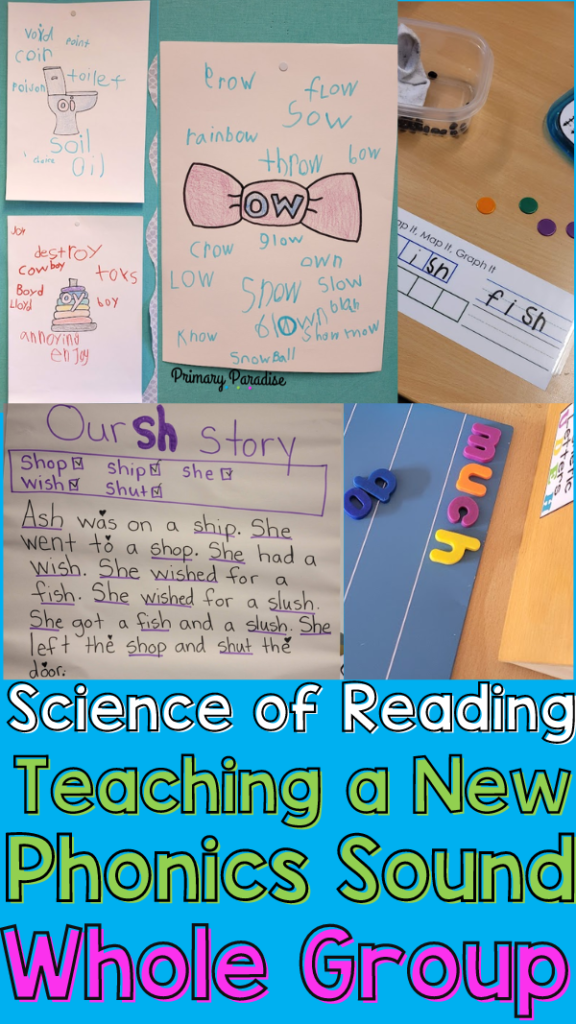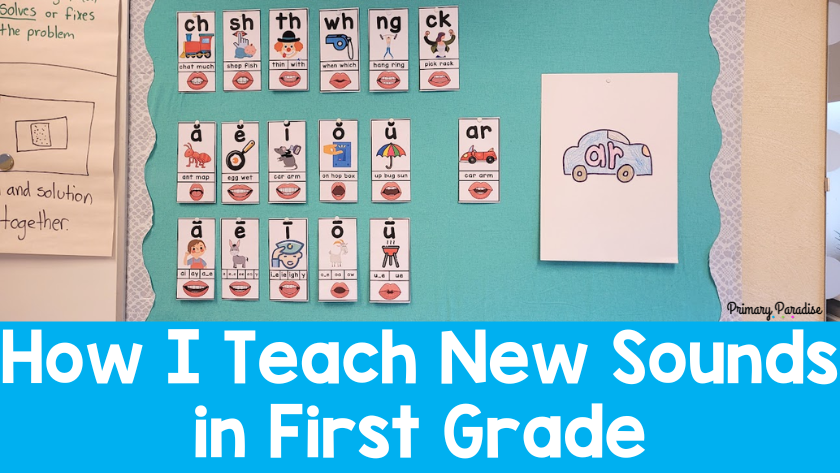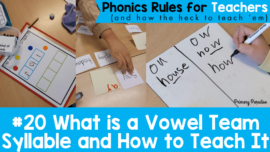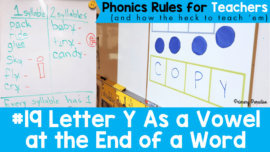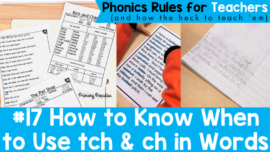Teaching new sounds using science of reading based approaches doesn’t have to be complicated. In my first grade classroom, after we review letter sounds quickly, we begin to introduce a new sound each week based on the sound progression from our phonics program. Here are the simple and effective ways we learn a new sound in first grade.
Day 1- Getting Started
Introduce It
First, we start by introducing the new sound. I do this in a number of ways. Sometimes I use a fun video that explains the sound. Scratch Garden has some excellent and silly videos that I use for this. I also will use an object to help the produce the sound such as a fish for the /sh/ sound.
I also take time to explain any important information about the sound. For example, when we learned our first digraph, sh, we took some time to learn that a digraph is two consonants that make one sound. I use hand motions to help make this stick. We flip our left and right hand and say “two letters” and then clap and say “one sound”. When we learned sh, for example, we flip our left hand and say s, flip the right hand and say h, and then clap and say /sh/. We continued this as we learned subsequent digraphs.
Brainstorm Examples
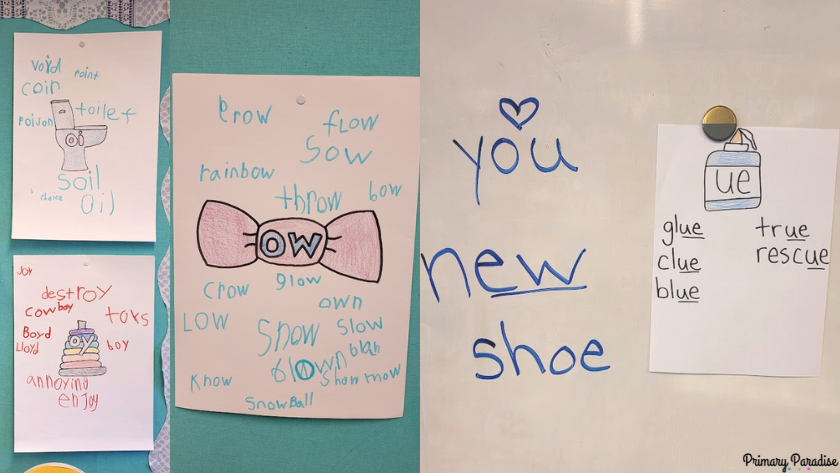
Next, each week I create a poster with a picture prompt in the middle and the letters that make our sound. For example, for sh I drew a fish and for ch I drew cheese. Then, I ask my students to think of words with that sound. This is a great opportunity to see how many of them can hear the sound clearly and to see who might be confusing it with another sound. (For example, sh and ch can be easy to mix up.) It’s also a great opportunity to talk about how there are more than one way to make certain sounds. Any words they say that fit into our spelling pattern go on our poster, and any words that don’t fit, we look at closely and talk about. These stay up all year for reference, and my students refer to them often.
Map Words
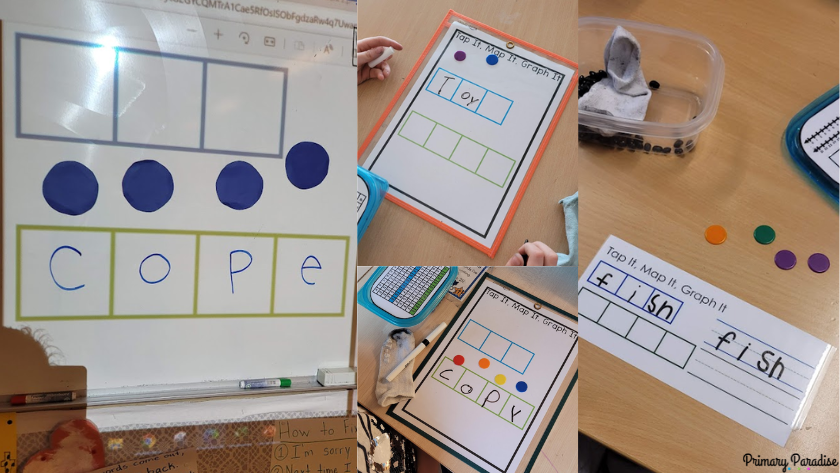
Depending on how long the previous activities take, mapping words might move to day 2. However, typically there is time to map some words with the sound on day one. Mapping words is a simple but effective way to help the brain understand the spelling of words. You can read a more in-depth explanation here, but here’s what to do.
First, we say the word verbally. Then, we use our fingers to tap out the sounds we hear. Not the letters, but the sounds. So, if we tapped out cat, we’d tap /c/-/a//t/. We’d tap 3 sounds. For fish, we’d also tap out three sounds: /f/-/i/-/sh/.
After we tap out the word, we place one counter in each sound box to represent each sound we hear. Lastly, we write down the letter or letters that represent each sound, one sound at a time. Once we finish writing the words in the boxes, we’ll talk about what the word means and/or give some verbal example sentences. We’ll repeat this with a few words with the spelling patterns.
Day 2- Magic Word Game
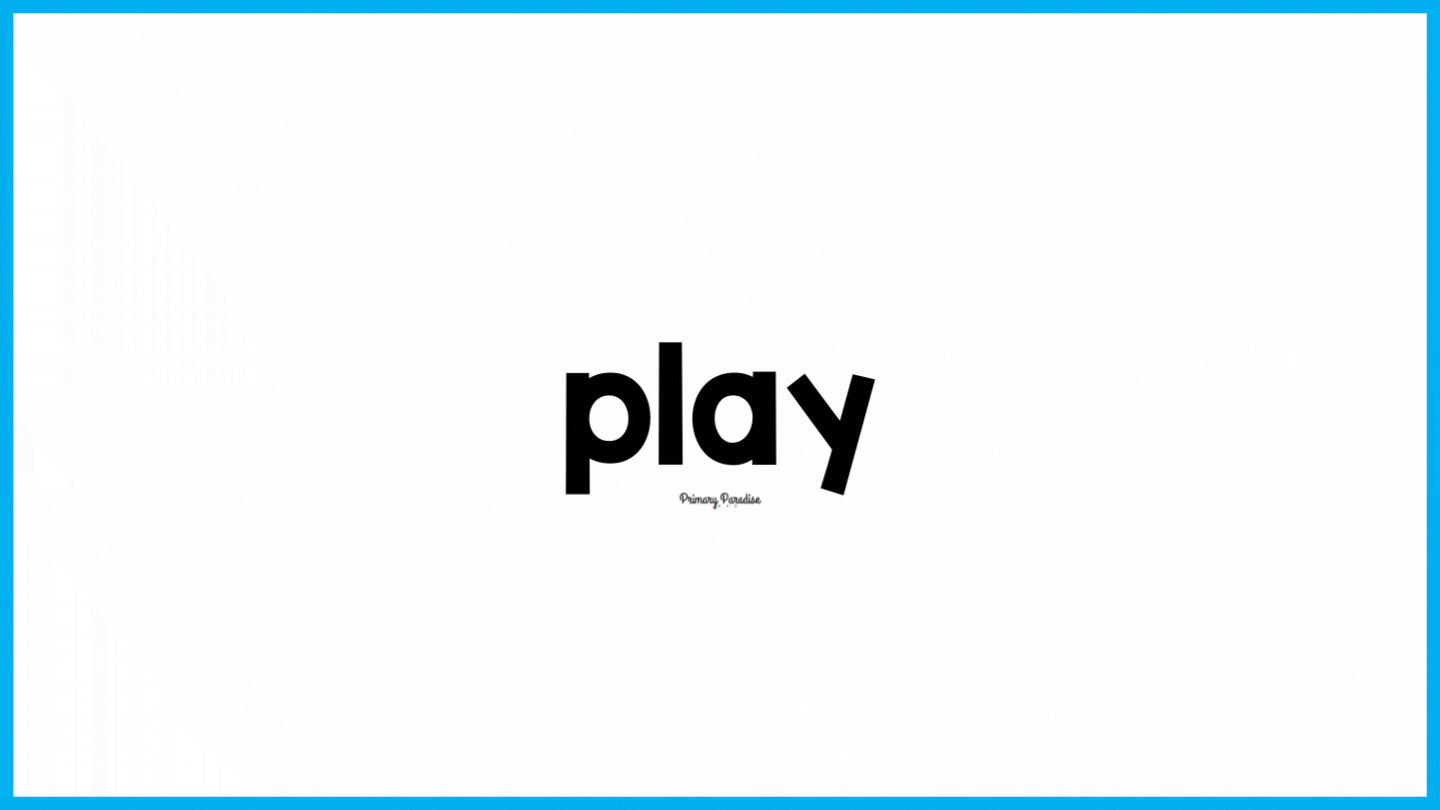
After we initially learn a new phonics sound, I spend some time each day practicing the sound in different ways. The order isn’t always the same, but these are all my go to, simple learning activities.
The Magic Word Game one of my go to, favorite games for practicing a new sound. You can read an in-depth explanation of this activity here, but it’s incredibly simple and fun. All you need to play are student white boards and dry erase markers.
The premise of the game is simple. Students start by writing a word on their whiteboard. Then, you add, remove, or change one letter or sound at a time as you create different words. I love this game because you can make it really simple or more complex. In my classroom, I also love to use it as a way to review past skills at the same time. So, we begin with words with our target sound for the week, but might also change letters to end up with past sounds we’ve learned.
In my classroom, I also always try to start and end with the same word. This isn’t necessary, but my kids always think it’s cool to see how we can end up with the same word. As we’re changing our words, we might say a sentence to define a new word, talk about if it’s a closed or open syllable, or discuss what sound patterns we see.
Day 3- Story Time
When we’re working on learning a new sound, it’s also important that students know the meaning of words using that sound. They also need to know how to use that sound in context. One my favorite ways to practice this is with our sound story time! Instead of listening to a story, my students help make the story! Here’s a few variations of this activity.
Fill in the Blank Sentences
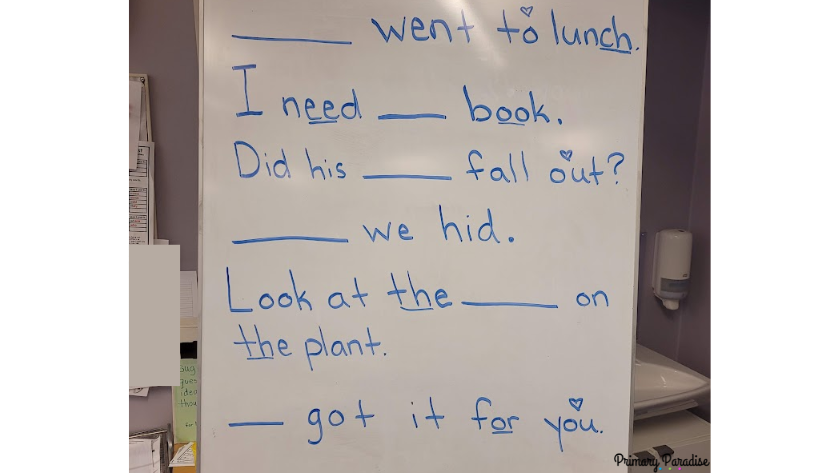
The most simple form of this is to just write a sentence for each word that uses the focus sound. Then, students help to fill in the blanks of the sentence. Although it’s not a sentence, it does help them think about the meaning of the words and use them in context.
Fill in the Blank Story
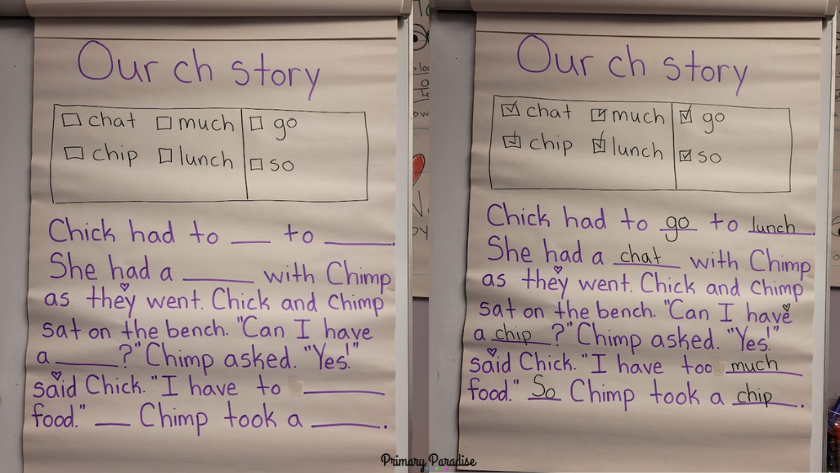
The next option I use is a fill in the blank story. This is similar to the fill in the blank sentences, but of course it’s a coherent story. When I write these stories, I only use words and sounds that we’ve learned already as much as possible.
Write a Story Together
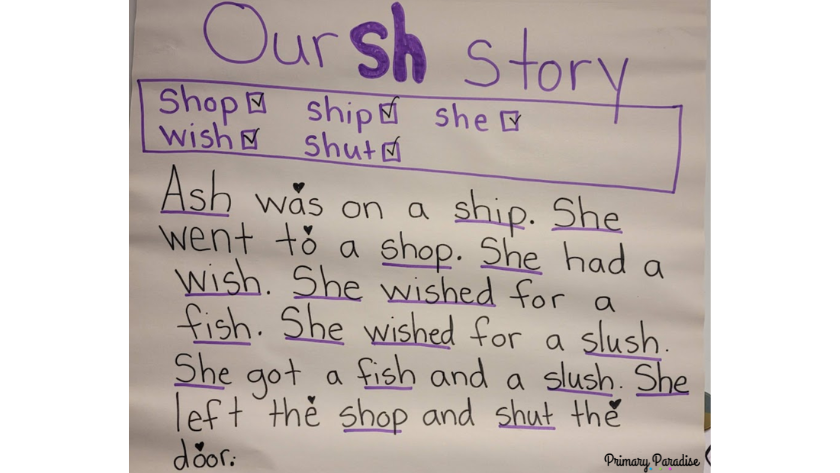
The last option is my favorite, but takes more time and is a bit harder. We write a story together using a bank of words using the sound we’re focusing on. As they tell me the sentences, I will underline any words with our focus sound. This can be really meaningful and fun! The story often ends up to be silly and the children really enjoy this. My favorite thing about this option is that, in addition to practicing using words with our sound in context, they’re practicing things like sentence structure, story writing, and working together.
Day 4- Journal
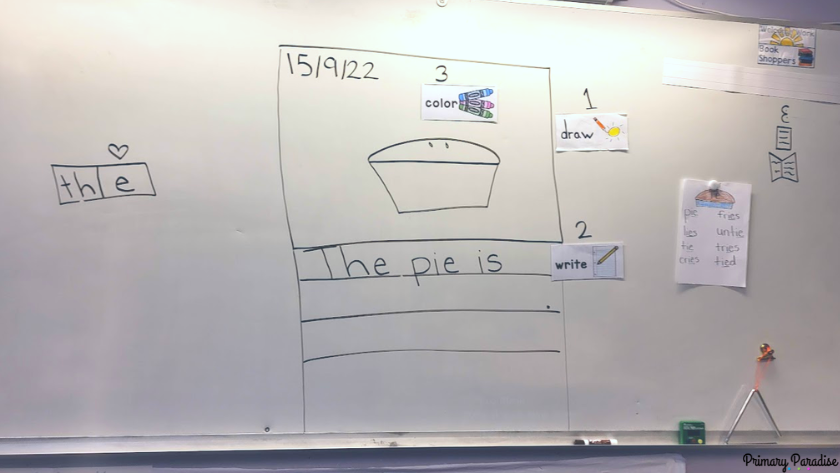
Once my students have had a good amount of exposure to the phonics sound of the week, I like to have them write a sentence (or more as the year goes on) using a word (or more) with our focus sound. In the beginning of the year, I might give them a sentence stem to make it easier. This means they would use a specific word. For example for sh I might give them “The ship is”. However, as the year goes on, I give them less structure and more freedom.
All Week Long- Word Work and Small Group
Word Work

In addition to all of this whole group work, my students also spend time during reading centers practicing building and writing words with our sound of the week. This is independent practice, but I do take a look at their work when they’re done. It’s a great chance for me to quickly make note of students who are still struggling, and it’s very helpful for them to have the chance to build their words in a hands on way.
Small Group Practice
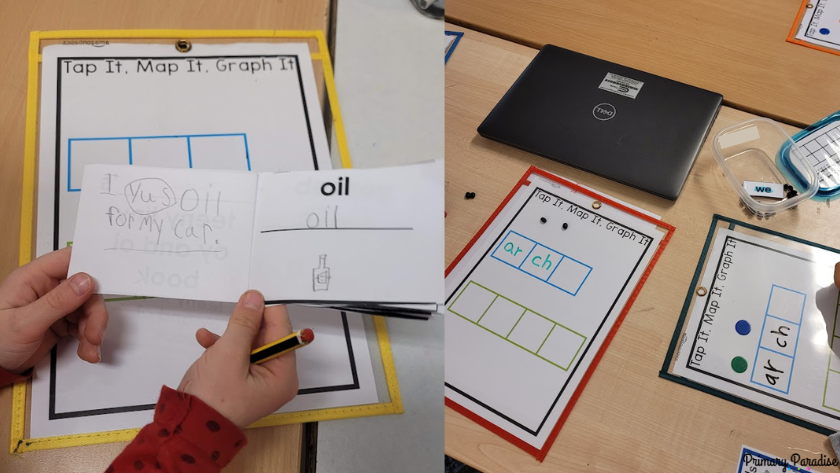
In addition to everything else, I will also take some time during small group work focusing on the sound of the week. For my struggling students, that means a lot of work with word mapping, word building, and a lot of the things we’re already doing in class, but in a smaller setting. we also might spend time sorting words by spelling patterns and phonics sounds so we can spend time on past sounds as well. For my higher level students, that will look different. For those students, we will work more on reading and writing words with those sounds in context. Using controlled reading passages and partner plays makes this practice fun as well. We also might take time to create more complex words, examine how we can change words with those sounds using prefixes, endings, and so on (depending on their abilities).

Day 5 – Assess
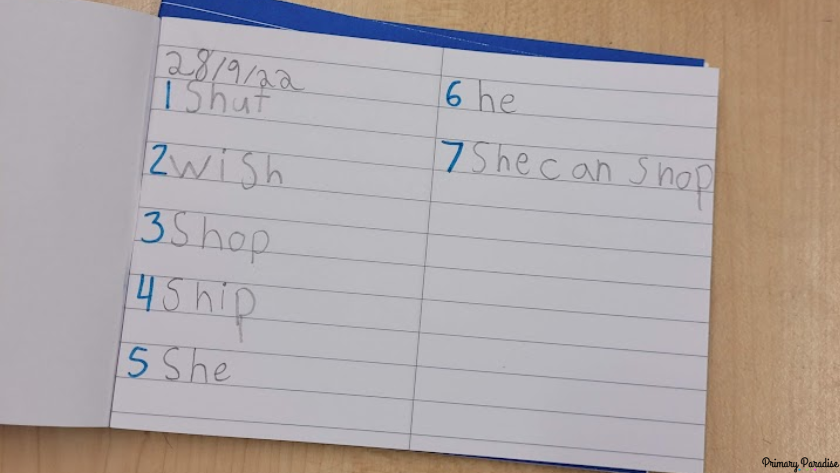
On Friday, I assess my students to see if they’ve mastered this sound. Of course, we will add the new sound to our bank of phonics sounds that we can use when we read and write. So, it doesn’t mean we’re now down with ee or sh. It’s just an opportunity for me to see what students “got it”.
I call our assessment on Friday a “spelling check”. In my current school we do have a set list of words for students to practice that we test them on on Friday. However, we also practice many other words with these sounds. At the beginning of the year, I say the word, my students repeat, and then we tap out the words of the sound together. Then, they write down the letters they hear/know. About half way through the year, I stop tapping it with them and encourage them to do it on their own.
I also end my spelling check with a dictation sentence. This is a great way to see if students can use the words in context. It’s also a great check of if they still remember past sounds we’ve learned. The sentence only includes sounds and high frequency words that have been explicitly taught. I find that to be the best assessment of their phonics sound and writing development.
